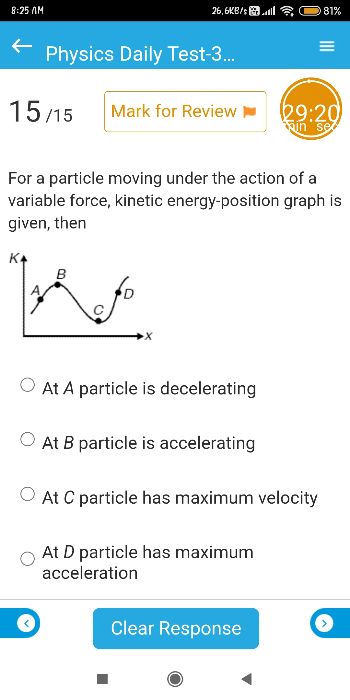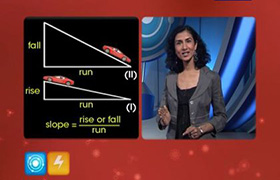CBSE Class 11-science Answered
please solutions

Asked by solankihemant2007 | 05 Mar, 2022, 17:19: PM
Kinetic energy , K = (1/2) m v2
where m is mass and v is velocity of particle
Hence velocity v is directly proportional to √K
(1) At A particle is decelerating :- This stament is false because At A slope is +ve , i.e. kineteic energy increasing .
Hence speec increasing and particle is under acceleration.
(2) AT B particle is accelerating :- This statement is false becuase at B kinetic energy is maximum and
subsequently kinetic energy keeps on decresing. Hence at B decelration starts and in subsequent motion is with
decreasing velocity. Particle is not accelerating.
(3) At C particle has maximum velocity :- This statement is false because we see that particle has minimum kinetic energy
at C . Hence particle has minimum velocity
(4) At C particle has maximum acceleration :- This is true. if we compare the positive slope at A and D ,
we find that slope at D is greater than slope at A. Hence at D change of kinetic energy is maximum ,
hence change of velocity is maximum , hence particle has maximum acceleration
Answered by Thiyagarajan K | 05 Mar, 2022, 19:48: PM




